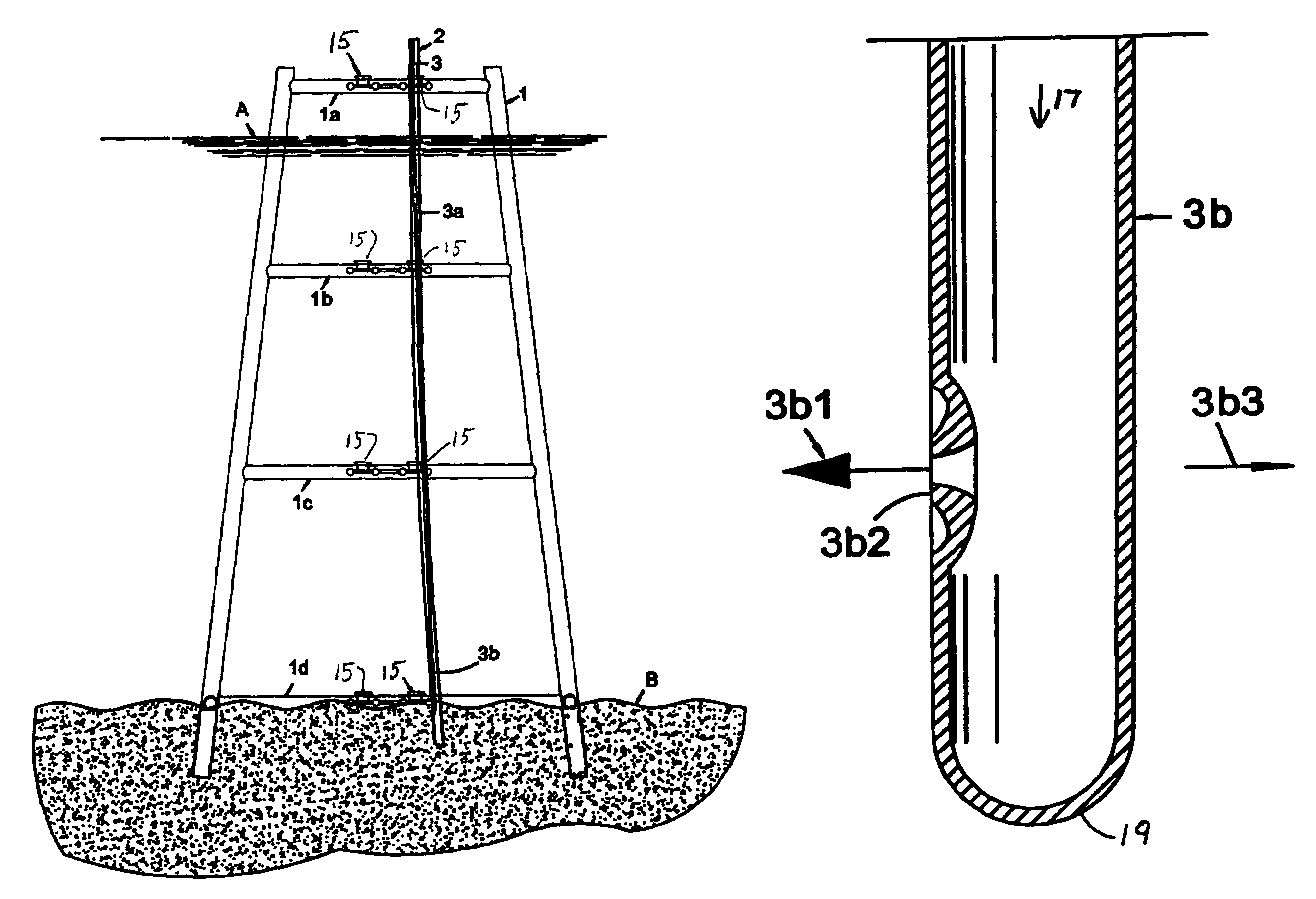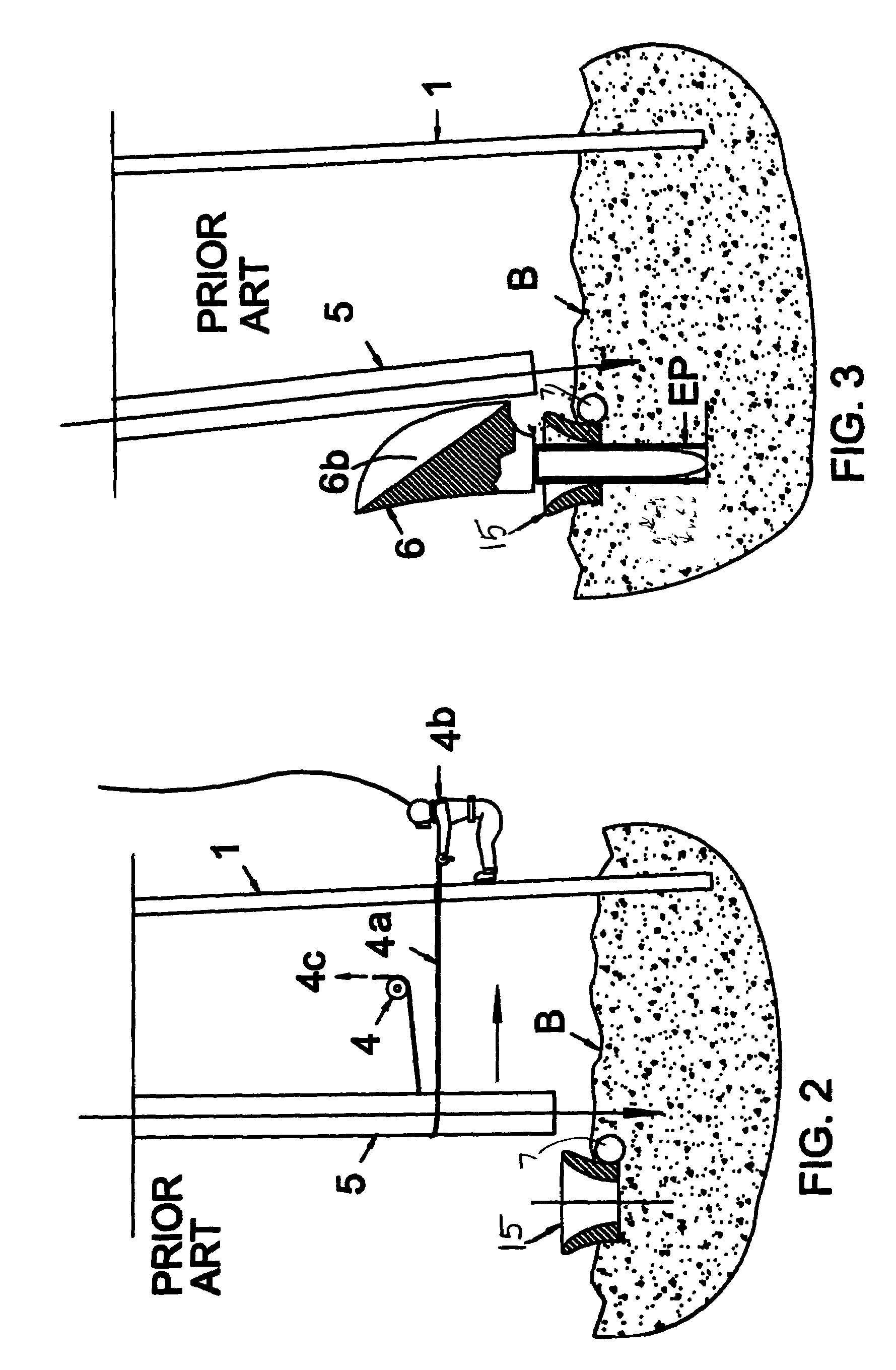Conductor pipe string deflector and method
a technology of conductor pipe and deflector, which is applied in the direction of drilling pipes, well accessories, sealing/packing, etc., can solve the problems of inconvenient installation, inconvenient deflection of tubular string, and inability to meet the requirements of a single vessel, etc., and achieves the effect of reducing the cost of installation
- Summary
- Abstract
- Description
- Claims
- Application Information
AI Technical Summary
Benefits of technology
Problems solved by technology
Method used
Image
Examples
Embodiment Construction
[0030]It should be understood that the description herein below may use the terms drill string, pipe string, or the more general term tubular or tubular string interchangeably without intention of limitation. It should be further understood that the device and method described herein can be applied to tubulars other than drill string, casing, or tubing.
[0031]FIG. 1 illustrates the lower portion of a typical fixed offshore platform 1. It is well known in the art that the platform structure stands in the seabed B, is preferably anchored in a conventional manner, and preferably has vertically distributed braces such as illustrated by braces 1a-d. It is further well known that the platform comprises a plurality of “slots” through which one or more wells can be drilled. Typically, guide sleeves 15 are mounted to the braces 1a-1d and are substantially vertically aligned with the “slots”. Typically, tubulars, used for drilling and production operations are lowered through the “slots” and t...
PUM
 Login to View More
Login to View More Abstract
Description
Claims
Application Information
 Login to View More
Login to View More - R&D
- Intellectual Property
- Life Sciences
- Materials
- Tech Scout
- Unparalleled Data Quality
- Higher Quality Content
- 60% Fewer Hallucinations
Browse by: Latest US Patents, China's latest patents, Technical Efficacy Thesaurus, Application Domain, Technology Topic, Popular Technical Reports.
© 2025 PatSnap. All rights reserved.Legal|Privacy policy|Modern Slavery Act Transparency Statement|Sitemap|About US| Contact US: help@patsnap.com



